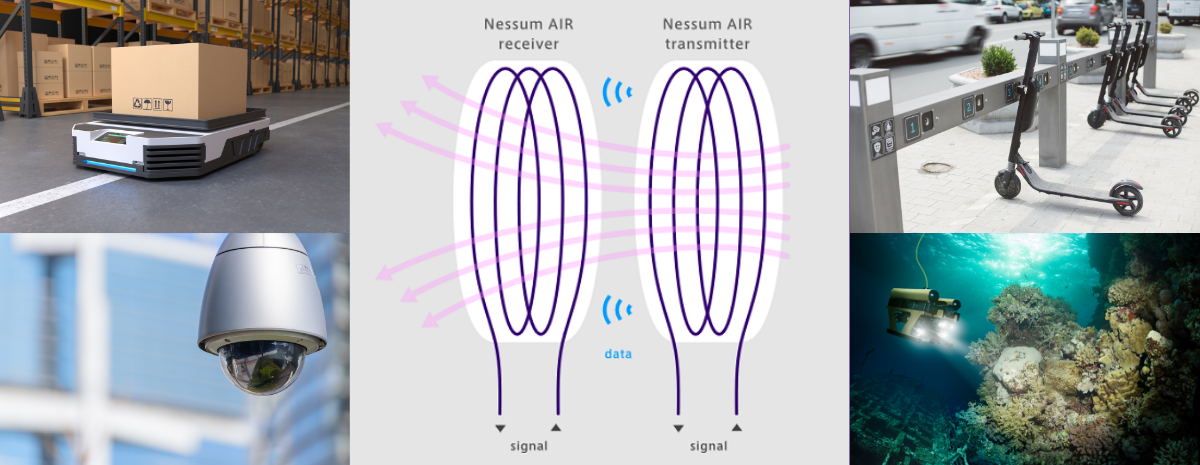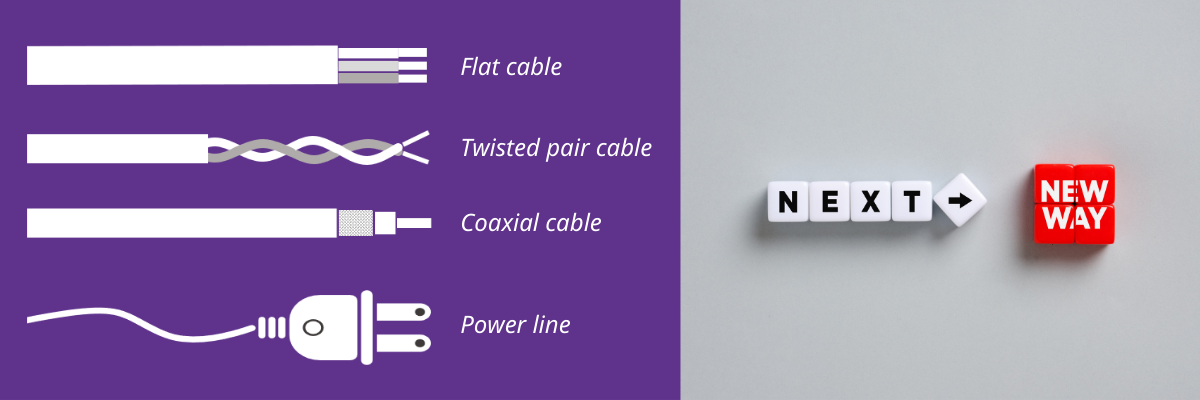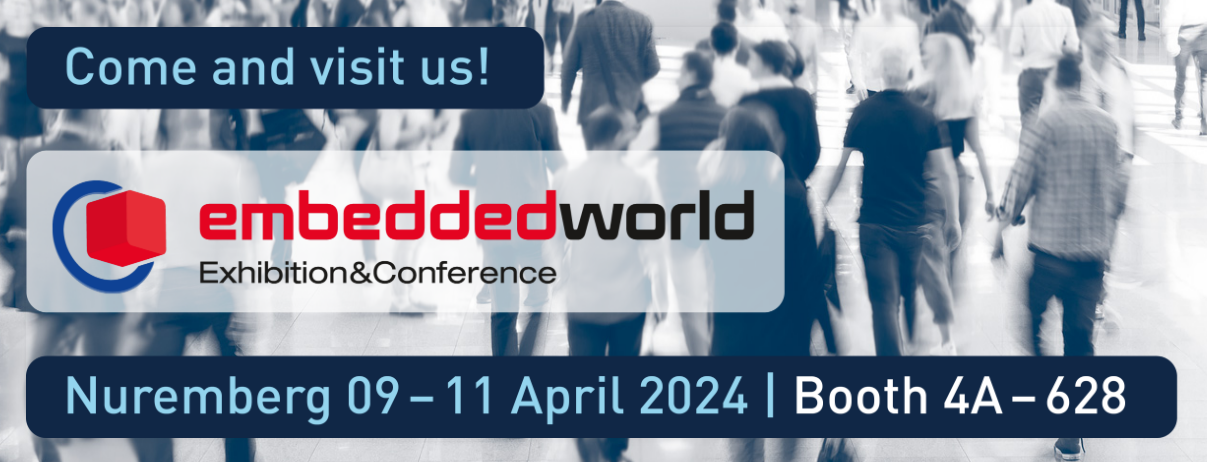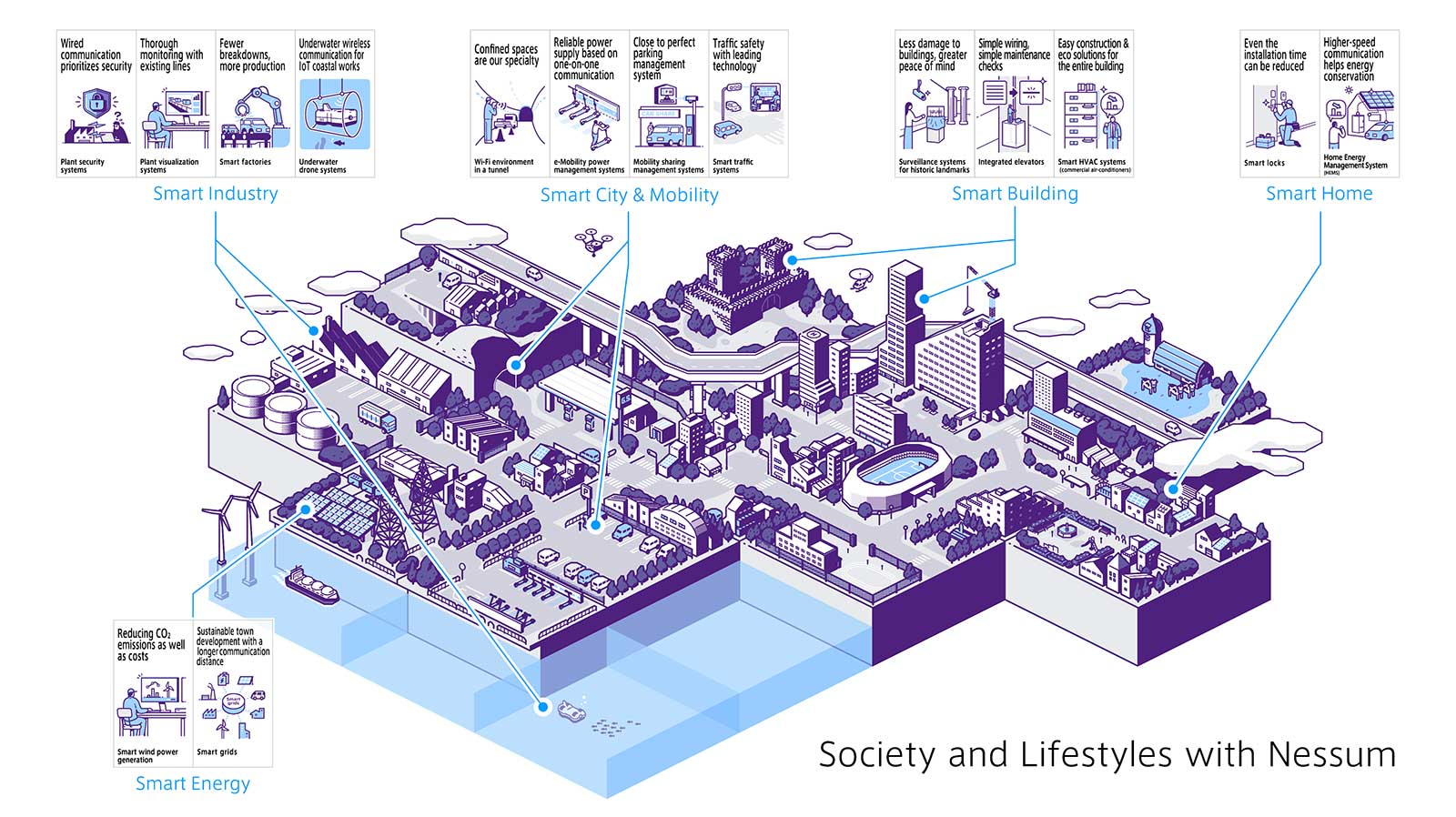What Is Power Line Communication (PLC)?
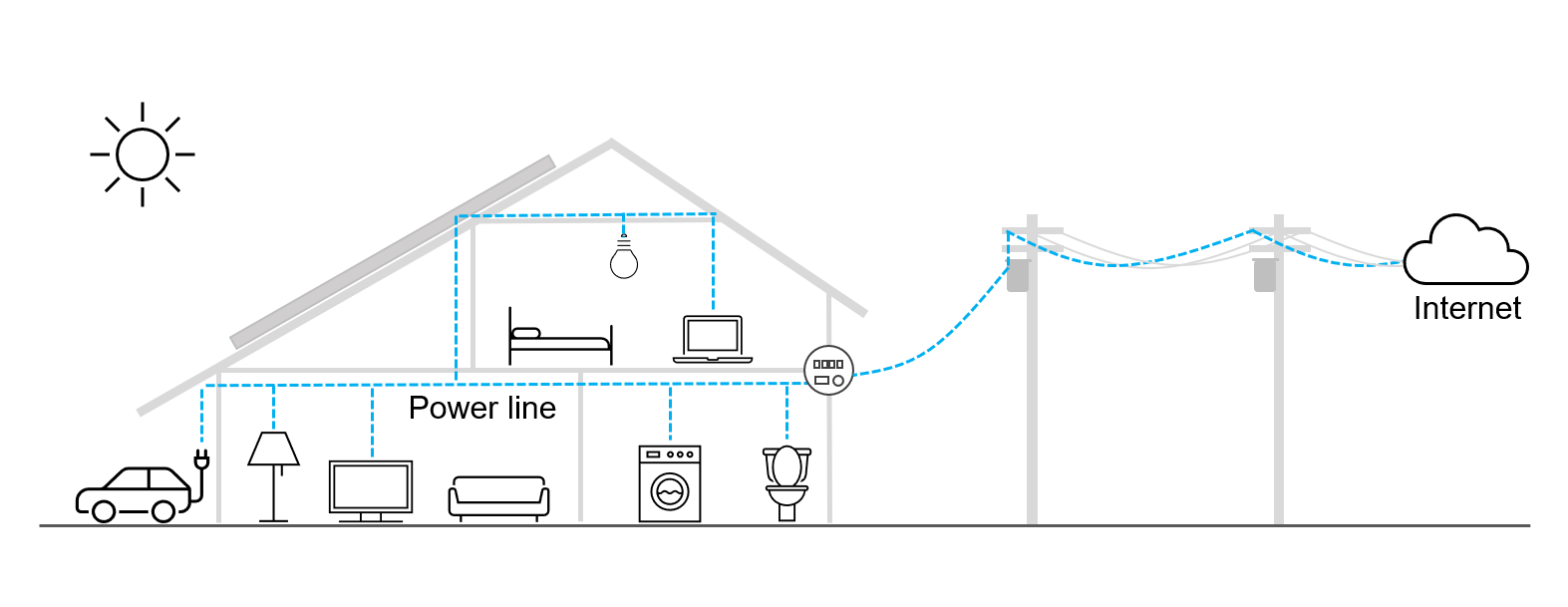
Power Line Communication (PLC) is a data transmission technology using existing cables such as power lines, coaxial cables, twisted pair cables, etc.
By using existing cables as a transmission medium, it is possible to quickly build a network at a low cost.
In the case of using power lines, power and data transmission can be done with a single cable, which can reduce the types of cables in a network.
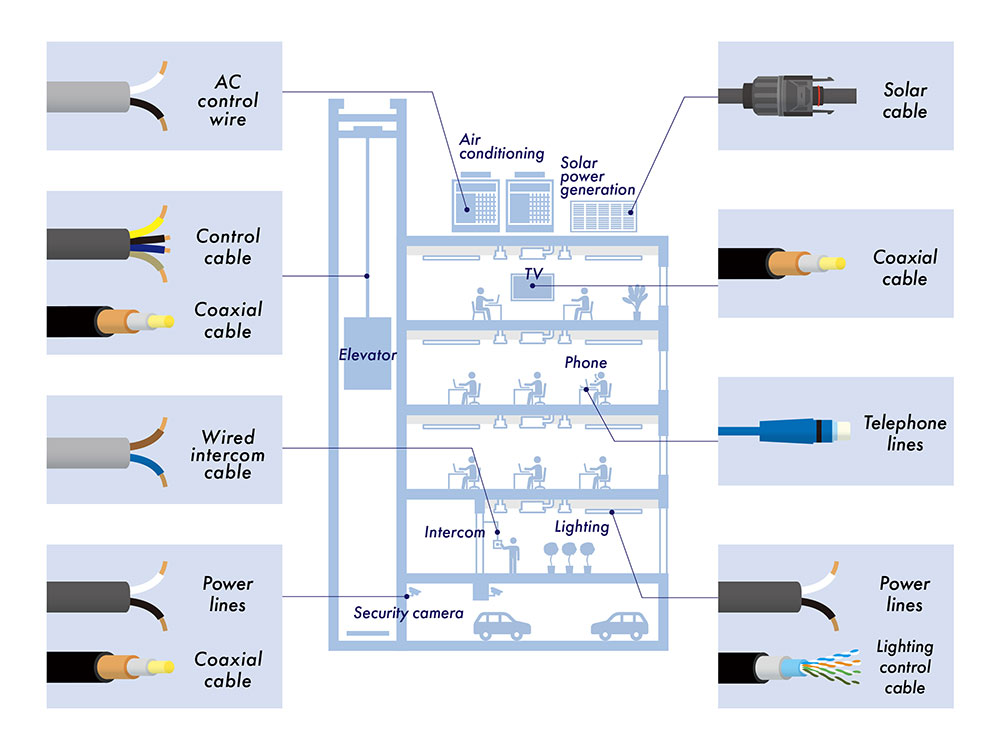
PLC Technology – How Does It Work?
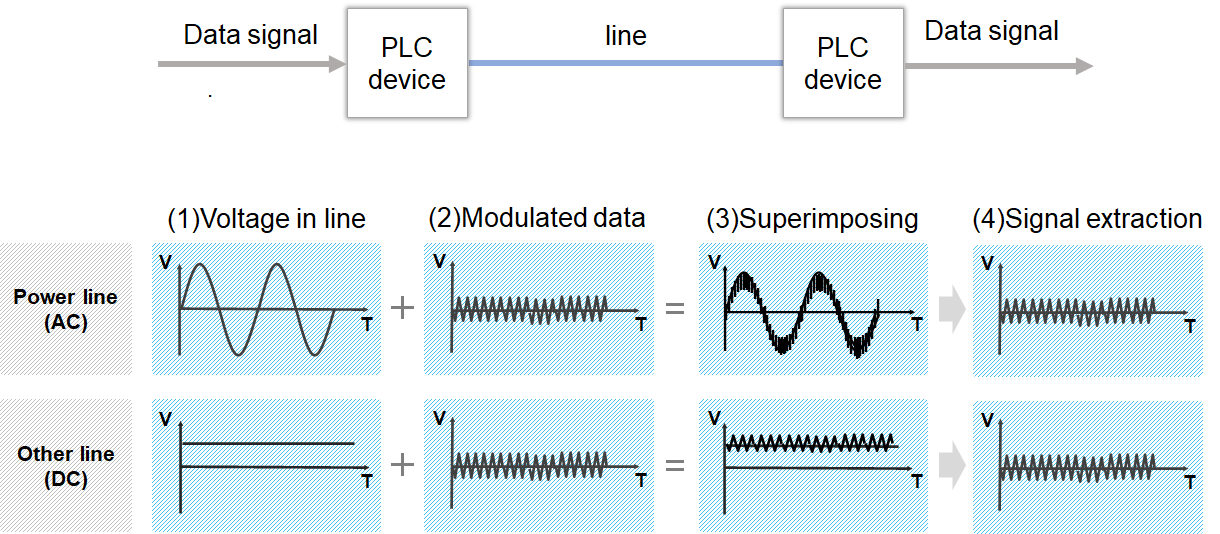
The basic principle of Power Line Communication is the following.
When transmitting and receiving data between two devices, the data is modulated on the transmitter, and the modulated signal is superimposed on the AC or DC power supply voltage.
In the receiver, the data is extracted by separating the power supply voltage and the modulated signal with a filter and demodulating the modulated signal.
PLC can be used on AC power lines, but keep in mind that it can also be used on DC power lines. For example, it can be used for storage batteries, lighting, EV charging, etc.
Types of PLC Technologies
| Frequency Band |
Technology Name |
Frequency Range |
Transmission Distance |
Physical Layer Speed |
International Standard |
|---|---|---|---|---|---|
| Narrowband | G3-PLC | < 148.5 kHz (EU) < 490 kHz (FCC) |
Long | < 280 kbps[1] | ITU-T G.9901 ITU-T G.9903 IEEE 1901.2 |
| Prime | < 1.0 Mbps[2] | ITU-T G.9901 ITU-T G.9904 IEEE 1901.2 |
|||
| Mid-band | HPLC | 0.7 - 12 MHz | Middle | 150 kbps to 10 Mbps[3] | IEEE 1901.1 |
| Broadband | HomePlug | 1.8 - 86 MHz | Short | < 1.3 Gbps[4] | IEEE 1901 |
| G.hn | 2.0 - 80 MHz | < 1.5 Gbps[5] | ITU-T G.9960 ITU-T G.9961 ITU-T G.9962 ITU-T G.9963 ITU-T G.9964 |
||
| Nessum WIRE | 0.06 - 100 MHz(*) | Long to Short | 7.8125 to 860 Mbps[6] | IEEE 1901 IEEE 1901c ITU-T G.9905 |
Narrowband PLC
G3-PLC
G3-PLC is a narrowband PLC technology managed by G3 Alliance. The related standards are G.9901, G.9903, and IEEE 1901.2. It can offer physical data rates up to 280 kbps in the FCC band.
PRIME
PRIME (PoweRline Intelligent Metering Evolution) is a narrowband PLC technology managed by PRIME Alliance. The related standards are G.9901, G.9904, and IEEE 1901.2. The physical data rate is up to 1.0 Mbps in the FCC
Mid-Band PLC
HPLC
HPLC is a mid-band PLC technology intended for smart meters, smart traffic lights, etc. The related standard is IEEE 1901.1. The physical data rate is up to 10 Mbps.
Broadband PLC
HomePlug
HomePlug was a broadband PLC technology managed by HomePlug Powerline Alliance. The Alliance announced in October 2016 that it would wind down its activities, and as of December 2021, the Alliance website (http://www.homeplug.org/) has been closed. The related standard is IEEE 1901. The physical data rate is up to 1.3 Gbps.
G.hn
G.hn (Gigabit Home Network) is a broadband PLC technology managed by Home Grid Forum. The related standards are G.9960, G.9961, G.9962, G.9963, and G.9964. The physical data rate is up to 1.5 Gbps.
Nessum WIRE
Nessum WIRE is a broadband PLC technology of long-range or high-speed wired communication using any wire such as control lines, coaxial lines, power lines, etc. This technology is managed by Nessum Alliance. The related standards are IEEE 1901 and G.9905. The physical data rate can be changed flexibly from 7.8125 Mbps (for long-range mode) to 860 Mbps (for high-speed mode).
Learn more about Nessum WIRE?
Positioning of PLC Network in IoT System

You can compare PLC to Wi-Fi and Ethernet from several viewpoints.
PLC has advantages and disadvantages compared to them, and it enables you to build a network with a moderate performance (note that it satisfies the requirements in most IoT applications) at a low cost.
For those who have concerns about interference and security in Wi-Fi networks but feel the cost of a network using Ethernet is high, PLC can offer an optimal solution as a new option.
It is also possible to benefit from the advantages of each other by building a hybrid network of PLC and Wi-Fi.
Pros and Cons of PLC
As mentioned above, note that the pros and cons of PLC are not fixed and depend on what you are comparing.
An advantage compared to Wi-Fi can be a disadvantage compared to Ethernet (and vice versa).
Advantages
Vs. Wi-Fi
- Higher security – There is little risk of data eavesdropping and falsification.
- Stability – The change of transmission characteristics due to the surrounding environment is small, so a constant performance is maintained.
- Complementary to Wireless – Data transmission using existing cables is possible even in areas where radio waves are hard to reach (e.g., underground, elevator, steel ship, etc.).
Vs. Ethernet
- Lower installation cost – Installing new cables and HUBs for relaying is not needed.
Disadvantages
Vs. Wi-Fi
- Lower speed – Maximum speed in the standard is lower than Wi-Fi (9.6 Gbps).
- Mobility – The place of the communication equipment is fixed.
Vs. Ethernet
- Lower speed – Maximum speed in the standard is lower than Ethernet (10 Gbps).
- Unstable environment – The influence of noise from connected devices exists when using power lines.
Applications – Where Is Power Line Communication Used?
PLC technology is widely used in the following systems to empower Smart Building, Smart Factory, Smart Grid, Smart City, etc., as a solution to reduce network construction costs.
- Advanced Metering Infrastructure (AMI) systems
- Micro-inverters
- HVAC systems
- Elevators
- Storage batteries
- Smart street lights
- Lighting control systems
- Intercom systems
- Security camera systems
It is also used in the following fields to reduce the number of harnesses used in the equipment.
- Automotive
- Aerospace
- Industrial robot
Key Facts To Remember
With the diversification of IoT applications, the way to connect a large number of IoT devices is not limited to Wireless, Ethernet, and RS485 / RS232C.
In addition, the requirements for these networks include not only communication performance but also reliability, cost, etc.
PLC will bring benefits to your business as one of the optimal network solutions.
Here are key facts you should know about PLC:
- PLC is a technology that enables quick and low-cost network construction reducing the types of cables used in a network.
- You can build a network using not only power lines but also coaxial cables, twisted pair cables, etc.
- You can use PLC not only on AC power lines but also on DC power lines.
- There are three types of PLC technologies, Narrowband PLC, Mid-band PLC, and Broadband PLC depending on the frequency band used. The performances of transmission speed and transmission distance are different.
- Compared to Wi-Fi and Ethernet, you can build a network with moderate performance (that satisfies the requirements in most IoT applications) at a low cost.
- It is possible to benefit from the advantages of each other by building a hybrid network of PLC and Wi-Fi.
Subscribe To Our Newsletter For FREE!
Reference
[1] Specifications & User Guidelines
[2] Specification for PoweRline Intelligent Metering Evolution v1.4
[3] What Is PLC-IoT? How Does PLC-IoT Work? – Huawei
